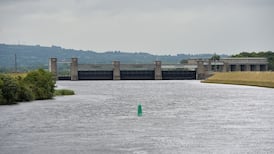What city in the world can boast that its principal waste-treatment plant has become a major tourist attraction? Only Vienna, where the municipal incinerator at Spittelau, a bizarre mix of art and technology, is one of the wackiest buildings in town.
Designed by the famous Austrian painter and architect, Friedensreich Hundertwasser, who died earlier this year, the Spittelau incinerator has been one of the city's eye-catching landmarks since it was rebuilt in 1989; it even features on tourist postcards.
What is so surprising about the facility, apart from its design, is the fact that it is located within the built-up area. Vienna's business university is right alongside, the motor registration office is next door and there are six-storey apartment buildings just 200 metres away.
Commuters using the Spittelau S-bahn/U-bahn station, also located beside the incinerator, seem to take it for granted. And for those who want to be reassured that it is not polluting the atmosphere, there is an electronic display board at the nearest traffic junction.
The variable-message display shows at a glance the plant's emissions of six major pollutants - carbon monoxide, sulphur dioxide, hydrogen chloride, nitrogen oxides, hydrocarbons (SKW) and dust (Staub) - and in every case they are always far below the maximum limits.
Cancer-causing dioxins are not included in the display because their concentrations are so low - between 0.02 and 0.04 nanograms per cubic metre - that they cannot be measured continuously. These levels are between 20 per cent and 40 per cent of the permitted limits.
Dioxin levels in the emissions from Spittelau's 126m flue - about the same height as the "Spike" planned for O'Connell Street in Dublin - are measured three times a year. All the data are transmitted online to the environmental protection authorities.
The "golden ball" wrapped around the flue about halfway up is the emissions-testing station. Fernwarm Wien, the municipally-owned company that runs it to help fuel an extensive district heating network, says the ball is a visible symbol of its commitment to clean air.
The plant incinerates some 270,000 tonnes of municipal waste a year and was originally built to provide heat for Vienna's new general hospital two kilometres away. The 60 megawatts of heat it generates is sufficient to provide heating for some 15,000 homes in the city.
Fernwarm Wien is Austria's largest producer of district heating, with furnaces at nine plants, including two waste incinerators, operating 24 hours a day. The Spittelau plant, which burns waste at a temperature of 850 degrees, produces 90 tonnes of saturated steam per hour.
Domestic and commercial waste is delivered by up to 250 trucks per day, with each truck tipping its load into a huge bunker topped by a garden densely planted with trees. The waste is then fed into two incinerator lines capable of handling 18 tonnes per hour.
Burning the waste is only the first stage in a complex process of treatment which the Austrians maintain is the most advanced in the world. Indeed, the bulk of the plant is taken up by sophisticated flue gas scrubbing systems and an ultramodern dioxin destruction facility.
The first-phase scrubbers remove hydrogen chloride, hydrogen fluoride and dust, while the second phase removes sulphur dioxide before the flue gases go through the final stage of treatment, selective catalytic reduction, before being released into the atmosphere.
The remaining clinker, amounting to 10 per cent of the original waste volume, has all metals removed from it by electromagnet to be dumped in a disused salt mine. The clinker is then mixed with cement to provide retaining wall for the city's main landfill site at Rautenweg.
"The current view is that thermal waste treatment, using the waste's energy content for power and heat generation, represents the most economically viable and environmentally sound of all treatment and disposal technologies", according to Fernwarm Wien.
Neither is there any evidence that the availability of incineration has acted as an impediment to recycling; of the 834,847 tonnes of waste produced by Vienna's 1.8 million citizens in 1998, nearly 40 per cent was accounted for by separate collections of recyclable materials.
Materials recycling in the city amounts to 30 per cent of the overall waste volume, with a further 9.5 per cent going to make compost. Of the rest, 49 per cent is incinerated, representing an annual saving of 330,000 tonnes of oil, and only 11.5 per cent is landfilled.
There is a landfill charge of £185 per tonne to discourage its use. And on the 130-acre Rautenweg landfill site, originally a gravel pit north of the city, methane gas is siphoned out and sold to a private company which uses it to generate electricity for the national grid.
One of the ways Vienna instills a sense of responsibility for waste management is through school tours of the various facilities for all schoolchildren aged between nine and 15. The city's refuse trucks also carry a "green monster" logo, symbolising the need to manage the waste.
At a major recycling centre near the Rautenweg landfill site, teams of workers deal systematically with the detritus of modern society. Here, some 30,000 fridges and 35,000 television sets and computers are broken down into their component parts, for recycling or incineration.
People are also encouraged to drop off unwanted "white goods" and other materials and, in return, they can help themselves to free compost and even view a sample garden full of vegetables grown with the aid of organically-certified compost from the city's waste stream.
The message from Vienna, where 99 per cent of the public water supply comes from pure mountain streams, is that the waste problem can be managed successfully and that, in a country with much higher environmental standards than ours, incineration is part of the solution.









